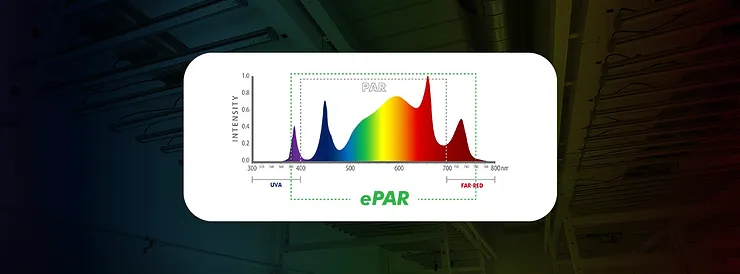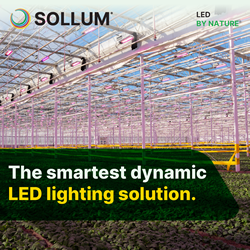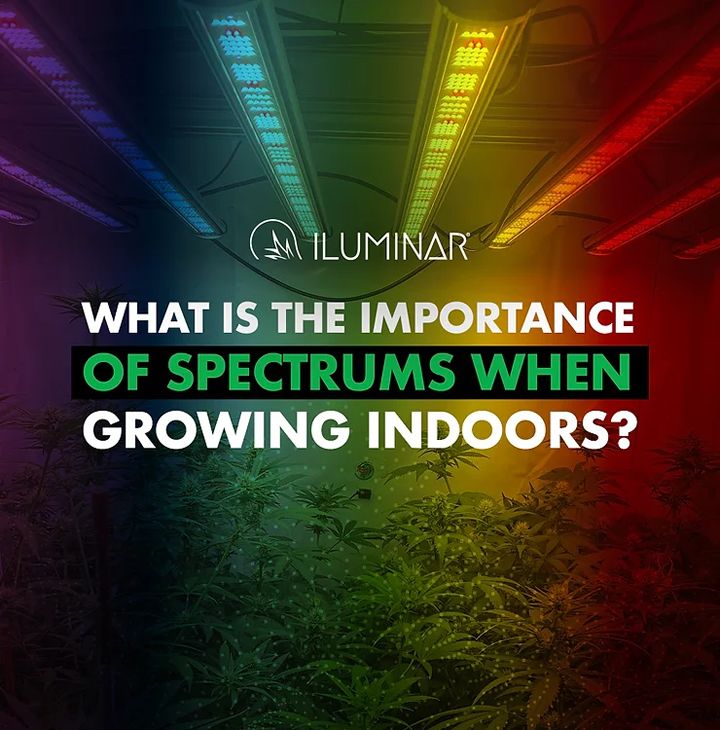Spectrums are crucial when growing plants indoors because they directly affect the photosynthesis process, plant growth, and development. Here are several reasons why the light spectrum is important.
Article from | Iluminar Lighting
Spectrums are crucial when growing plants indoors because they directly affect the photosynthesis process, plant growth, and development. Here are several reasons why the light spectrum is important:
1. Photosynthesis Efficiency: Plants use light energy to convert carbon dioxide and water into glucose and oxygen through photosynthesis. Different wavelengths of light are absorbed by various pigments in the plant, primarily chlorophyll, which is most efficient at absorbing red and blue light.

2. Growth and Development:
- Red Light (600-700 nm): Encourages flowering and fruiting by promoting bud formation and fruit development. It's crucial during the later stages of the plant's life cycle.
- Far-Red Light (700-800 nm): Affects plant morphology and can influence flowering times and elongation of stems.
3. Photomorphogenesis: This refers to how light affects plant structure and form. Different light spectrums can trigger various growth responses, such as seed germination, leaf expansion, and stem elongation.

5. Light Quality: The quality of light (specific wavelengths) can influence the nutritional content, flavor, and color of plants, especially in crops like herbs and vegetables.
6. Energy Efficiency: Using the right light spectrum can make indoor horticultural lighting more energy-efficient. LED grow lights, for example, can be tailored to emit specific wavelengths that maximize photosynthesis and growth, reducing wasted energy.

The content & opinions in this article are the author’s and do not necessarily represent the views of AgriTechTomorrow
Comments (0)
This post does not have any comments. Be the first to leave a comment below.
Featured Product


